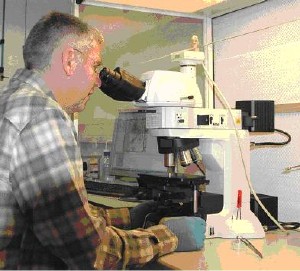Dec 7 2007
One of the UK’s largest planetary science departments is using its new Nikon LV-100D microscope to study dust collected by NASA’s Stardust spacecraft during its fly-by of comet Wild-2. This fly-by was the first mission to return cometary particles to earth.

The Open University’s Planetary and Space Sciences Research Institute (PSSRI) in Milton Keynes is using the Nikon LV-100D, in combination with a Nikon DS-Fi1 camera and DS-U2 PC control system configured with NIS-Elements imaging software, to take a first look at some of the oldest dust in the Solar System.
PSSRI researchers use the LV-100D, a modular optical microscope from Nikon’s Eclipse series, for a preliminary examination of cometary and interplanetary dust particles before carrying out further analysis with specialised instruments such as their surface-imaging mass spectrometer (NanoSIMS). The Nikon LV-100D is ideal for the department because, according to Senior Research Fellow, Dr Ian Franchi, “It is simple to use and provides high quality images.”
The dust particles, which are mounted on gold foil or foam blocks and too small to see with the naked eye, are mapped with the Nikon DS-Fi1 camera and NIS-Elements image-stitching function; this makes them easy to relocate using the NanoSIMS. Dr Franchi is impressed by how rapidly NIS-Elements can navigate around the sample maps, “It is superior to anything we had previously.” Furthermore, for identifying dust and contamination, “It’s easy to switch between darkfield and brightfield illumination”. In addition, the LV-100D’s modular design means that, “There is the opportunity to upgrade the camera, the controls, and some of the optical characteristics when the need arises.”
The LV Series supplied as a manual version, the LV100D, or as a motorised option, the LV100DA. With a modular design and several different contrast techniques, including brightfield, darkfield, polarised light and Differential Interference Contrast (DIC), it is a vibration-free and simple-to-use solution for routine and complex R&D applications.